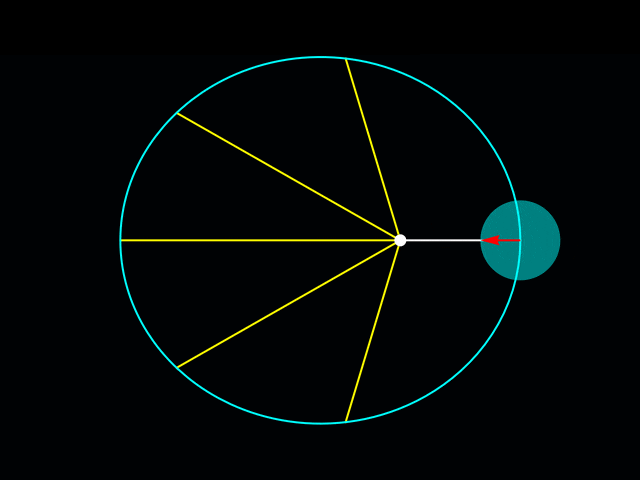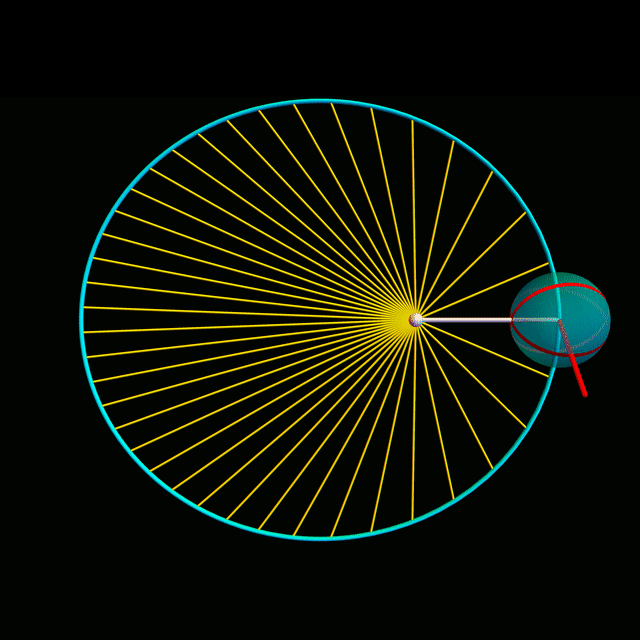Photograph the sky at the same time each day for a year and Sun will appear to execute a figure-8 path called an analemma, which is often inscribed on Earth globes and can be used as an almanac, as by Tom Hanks‘ character Chuck Nolan in the movie Cast Away.
The 2D animation below illustrates the formation of a 1D back-and-forth analemma for Planet whose spin axis is perpendicular to its orbital plane. Planet’s year divides into 7 equal sidereal days (when red arrow observer points left), 6 equal mean solar days (when white ray from Sun crosses yellow lines), and 6 unequal apparent solar days (when red arrow points along white ray toward Sun).
Planet’s rotation (spin), which is constant, and eccentric revolution (orbit), which is faster nearer Sun where gravity is stronger, cause mean solar days to be nonuniformly distributed about the orbit, dense near aphelion (far point at left) and sparse at perihelion (near point at right). For an equatorial observer who experiences noon at perihelion, mean noon (when yellow dots record Sun’s direction) precedes apparent noon during the orbital top half and succeeds apparent noon during the orbital bottom half, with the constant rotation “falling behind” during the fast orbital right half and “getting ahead” during the slow orbital left half.

Formation of a back-and-forth analemma (yellow dots) for an un-tilted planet in an eccentric orbit.
(You may need to click to see the animation.)
The 3D animation below (with a wide-angle perspective) illustrates the formation of a 2D figure-8 analemma for an oblique Planet whose spin axis is tilted 45° downward. Planet’s year divides into 40 equal sidereal days, 39 equal mean solar days, and 39 unequal apparent solar days. The constant tilt and elliptical orbit cause an equatorial observer to oscillate above and below Sun. For an equatorial observer who experiences noon at perihelion, mean noon (when yellow dots record Sun’s direction) precedes apparent noon, with Sun above the equator, during the orbital top half and succeeds apparent noon, with Sun below the equator, during the orbital bottom half, forming a figure 8. (In practice, the precise shape and orientation of analemmas vary with time of day and latitude.)



